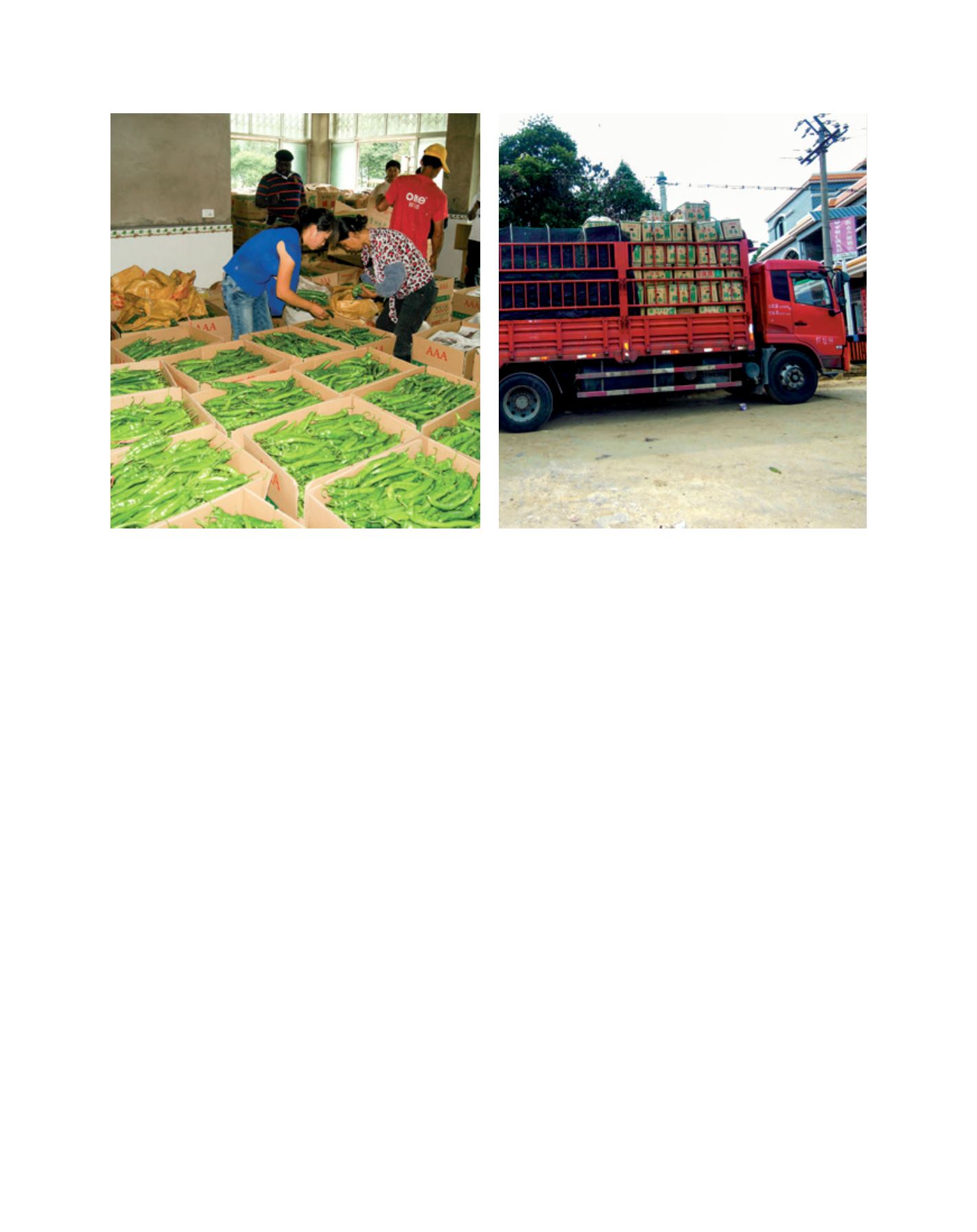

[
] 128
32-673 per cent.
10
Substantial increases in the area under
high-value crops (40 hectares in 2003 and 113 hectares in
2005) were observed.
In three years (2003-2005), the net yield advantage
and net monetary benefit per unit of water conserved for
watermelon and vegetables were 287.3 and 78.7 kg mm
-1
ha
-1
respectively. Net monetary benefits for vegetables and
watermelon were ¥147.1 and ¥83.4 (US$18 and US$10)
mm
-1
ha
-1
respectively. This reflected a similar trend of net
monetary advantage per unit area of ¥9,253 and ¥5,246
(US$ 1,141 and US$647) ha
-1
respectively over three years
due to availability of water during the most critical stage
for these crops. Net returns of vegetables per unit of water
per unit area in 2005 were 3.5 times higher than in 2003.
Higher benefit-cost ratios were observed with vegetables
than watermelons during the pre- and post-project period.
11
Lucheba now boasts two animal health centres, one
computer-aided, internet-enabled farmers’ training centre
and one Vegetable Growers’ Association. Those who had
migrated to cities have returned to villages as the quality of
life is better than in the city. The village’s average per capita
income is twice as high as the provincial per capita income.
The future of family farming in rain-fed areas
These cases underscore the role of smallholder farming
in food security and environmental sustainability in India
and China. The integrated approach combines progress in
productivity, sustainability and impact on food security.
There are two key points to note:
• agriculture, and family farming in particular, should
be the clear focus of a goal related to food security and
environmental sustainability
• smallholder agriculture should enter the agenda not only
through a focus on productivity but also through a broader
agenda of sustainability and building system resilience.
The benefits of family farming in India and China go far
beyond resource degradation and scarcity and contribute
to societies at large. In these countries, rain-fed agriculture
provides food for about half the population, in many ways
thanks to the integrated management practices adopted by
farmers. Family farming in most regions, including India
and China, is undergoing rapid transformation due to
internal and external drivers such as population growth,
urbanization, migration and resource degradation. These
have contributed to increased pressure on local resources,
unsustainable practices in land use, disintegration of local
customs and traditions, and increased vulnerability to
global change.
Smallholders in these regions have shown the potential
to bridge large yield gaps by actively adapting to change.
However, these efforts need to be supported by enabling
policies that will help them adapt to ongoing changes in
a sustainable way, to achieve sustainable livelihoods and
maintain important ecosystem services. National policies
need to support secure land tenure, access to resources
and to empower women to promote family farming in these
regions. The same is true for extension services that support
farmers in achieving sustainable farming practices through
advice in areas such as appropriate use of external inputs
including seeds, fertilizers and pesticides. Innovative tech-
nologies and traditional knowledge need to be carefully
integrated to increase and restore resilience along with
better access to markets through collective cooperation.
Grading and packing of green chilli and vegetables, which are then loaded onto a lorry for transport in Lucheba watershed, China
Images: ICRISAT
D
eep
R
oots
















